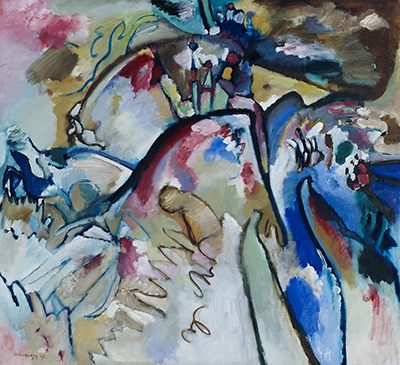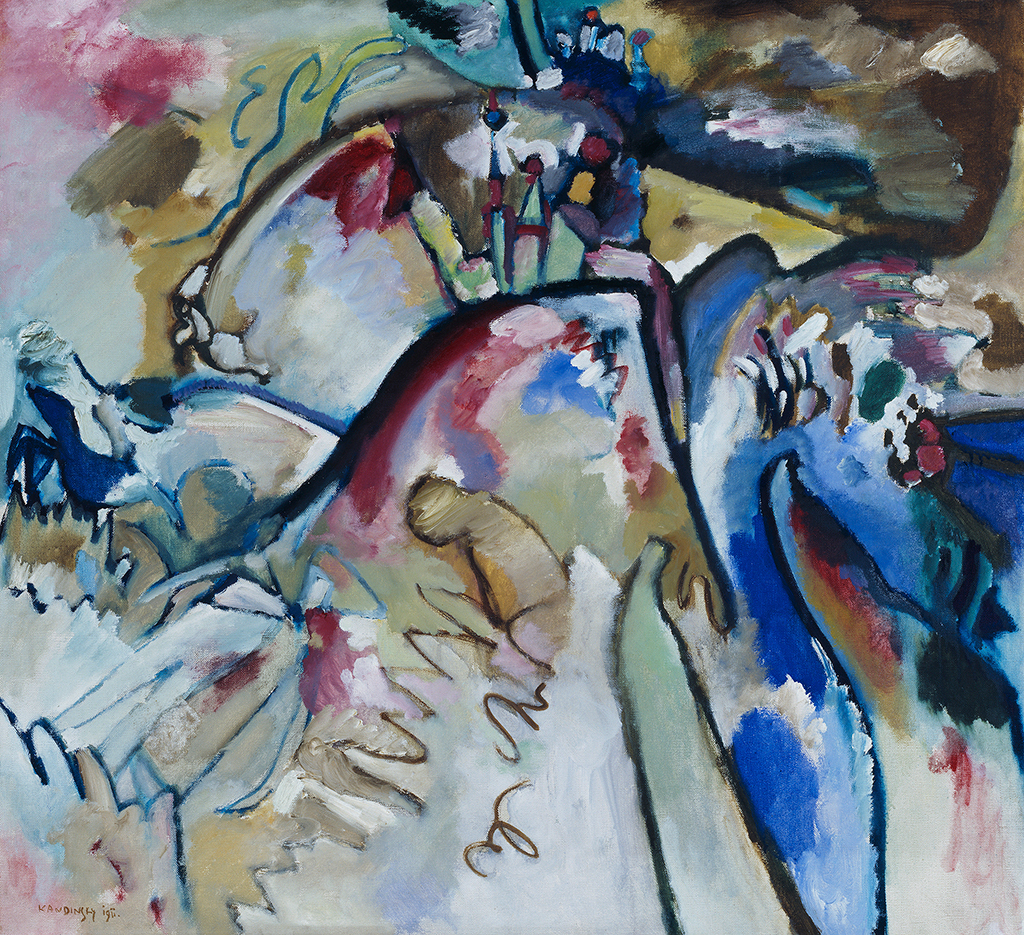The composition found in front of us here is entirely what one imagines when thinking of Kandinsky - we have his bright colour palettes as well as the swirling landscapes which roll up and down like a wild dream.
This painting, Improvisation 21a, was just one of a series of expressive artworks produced by Kandinsky around 1910/1911. He was enjoying an abstract style as well as making use of his knowledge around the theory of colour. He would later write a number of different publications around this topic and would incorporate bright colours across most of his paintings, whatever the content involved. He would use lines of black to create forms around these blocks of tone, and in the case of the painting in front of us, he used it to indicate the rolling hills across this exciting and vibrant landscape. Clusters of buildings can be seen in the background, all charmingly captured in the style of an artist with Russian roots that can be understood within elements of this artwork.
Kandinsky worked in a truly expressive, abstract manner during this period of his career. He loved to avoid traditional art styles and create these improvisations, as he called them, from his heart. There were similarities that persist between the different paintings of this period, many others have large numbers of figures, and the rolling hills being very much a consistent element. Those unfamiliar with his work would probably struggle to identify these different items at first look, but once you have a better understanding of his background as well as other artworks from around this period, then things are much easier to understand. This can be said for many other 20th century artists who worked with different forms of abstraction, such as Miro, Klee and Mondrian.
The artist would produce a large number of paintings that fitted under different labels, with this one being a part of his improvisations. The labels varied by how much thought or natural expression occurred within them and this was someone who always wanted to look as far into his own mind as he could, hoping to find all manner of different inspirations that perhaps had not been found before. Kandinsky would have ideas in his head, and an approximate means by which he would put them on canvas, but he liked to allow his mind to work with freedom and innovation. His colour choices could work naturally after years of study and expression was the important element to this particularly series of work which came about around 1910/1911 but still feel exceptionally contemporary even today.





